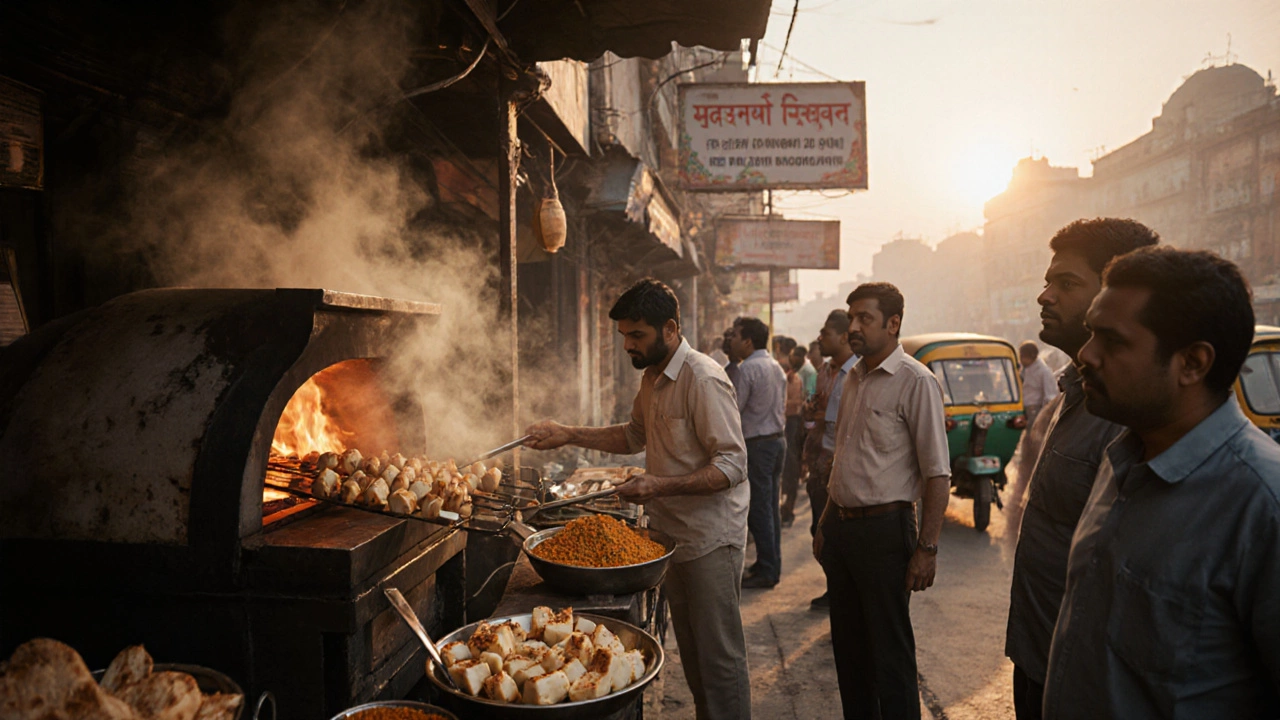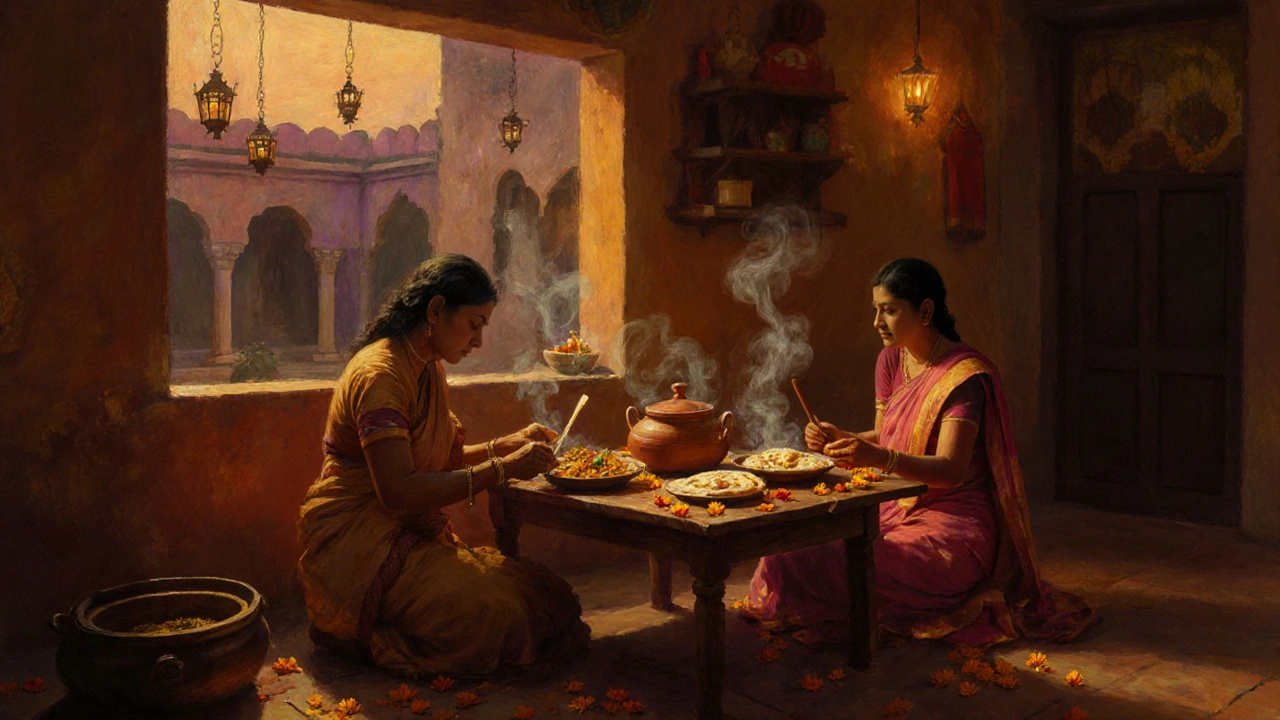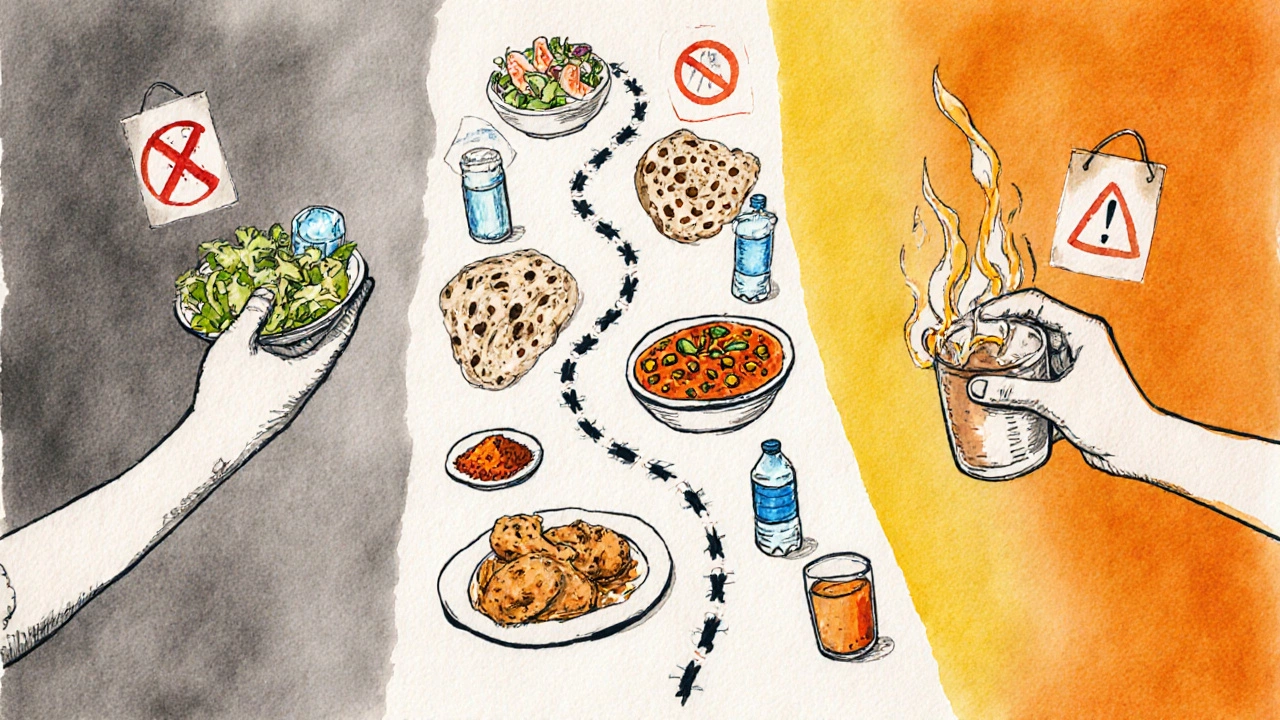What Americans Can Eat in India: A Practical Guide to Safe, Delicious Food in North India
 Oct, 30 2025
Oct, 30 2025
Indian Food Safety Checker
Check Your Food Safety
Select your food item and answer a few questions to see if it's safe to eat in North India.
Safety Assessment
When Americans first land in North India, the smell of cumin, cardamom, and fresh roti hits them before they even step outside the airport. The food is everywhere - sizzling on street corners, steaming in family kitchens, piled high in bustling markets. But for many, the question isn’t just what can they eat - it’s what’s safe to eat. The good news? Most Americans can eat well, even thrive, on Indian food if they know what to look for and what to avoid.
Start with the basics: what’s actually safe
You don’t need to stick to bland hotel buffets. Millions of tourists eat Indian food safely every year. The key isn’t avoiding all street food - it’s knowing which stalls are clean and which dishes are low-risk.Look for places with a high turnover. If a food stall has a line of locals waiting, that’s your best sign. Freshness matters more than fancy packaging. Hot, freshly cooked food is your friend. Bacteria don’t survive long at high temperatures, so a sizzling paneer tikka or a steaming bowl of dal makhani is far safer than something sitting out for hours.
Stick to these safe bets:
- Roti or naan - freshly baked and served hot
- Plain rice - especially if it’s been cooked and served immediately
- Paneer dishes - grilled or fried, not left sitting in sauce
- Chickpea snacks like chana masala or bhel puri (if it’s crunchy and fresh)
- Tea - hot, brewed with boiling water, served in clean cups
Most travelers who get sick aren’t eating from the busiest stalls - they’re eating from quiet ones, or from places where food sits under a plastic cover for hours. Trust the crowd. If it’s packed, it’s probably safe.
What to avoid - and why
Some foods are riskier, not because they’re bad, but because they’re harder to keep clean. Here’s what most Americans should skip on their first trip:- Raw salads - lettuce, tomatoes, cucumbers washed in tap water
- Ice in drinks - even in fancy hotels, ice is often made from untreated water
- Raw milk or dairy left unrefrigerated - especially homemade yogurt or lassi from street vendors
- Seafood - unless it’s from a reputable restaurant in a coastal city
- Buffet-style meals with food sitting out for hours
Why avoid these? India’s water supply varies widely. Even if the water is treated in big cities, it can pick up contaminants in pipes or storage tanks. Raw vegetables absorb that water. Ice melts into your drink. Dairy spoils fast in 35°C heat. It’s not about the food being dirty - it’s about the water and temperature control behind it.
One American traveler in Jaipur got sick after eating a mango lassi from a quiet stall. The vendor used fresh mango, but the milk had been sitting out since morning. He didn’t know - and neither did the vendor. That’s the hidden risk: it’s not always obvious.
What Americans actually love - and why
Once you get past the fear, you’ll find Indian food is surprisingly familiar. Many American tastes already line up with North Indian flavors.Think about it:
- You like grilled chicken? Try tandoori chicken - marinated in yogurt and spices, cooked in a clay oven.
- You enjoy pasta? Chole bhature - fried bread with spicy chickpeas - feels like comfort food with a kick.
- You love tacos? Paratha rolls - flatbread wrapped around spiced potatoes, chickpeas, and chutney - are the Indian version.
- You crave pizza? Paneer tikka pizza - yes, it’s a thing - is served in Delhi cafes and tastes like a fusion dream.
Many Americans are surprised how much they enjoy the spices. Cumin, coriander, turmeric - these aren’t just “hot” flavors. They’re layered, earthy, and deeply satisfying. Start mild. Ask for “thoda spicy” (a little spicy). Most kitchens will adjust.
Don’t assume all Indian food is fiery. Dishes like malai kofta (creamy vegetable dumplings in cashew sauce) or dal tadka (lentils with tempered spices) are rich, comforting, and gentle on the stomach.

Where to eat: hotels, street stalls, and local homes
You have options - and each has its own vibe.Hotels and restaurants - The safest bet, especially if you’re new. Chains like Haldiram’s, Moti Mahal, or Amritsari Naan House in Delhi and Agra follow strict hygiene standards. Their menus are tourist-friendly, with English descriptions and moderate spice levels.
Street food - The real magic. Head to Chandni Chowk in Delhi, the food alley near the Red Fort, or the night market in Varanasi. Look for stalls with gas burners, not open charcoal pits. Watch how they handle money and food - gloves? Tongs? Clean cloths? If they’re using bare hands to touch both cash and food, walk away.
Home-cooked meals - If you’re staying in a homestay or invited to a local home, say yes. Indian families take pride in feeding guests. They’ll serve you the best of their kitchen. You’ll get dishes you won’t find anywhere else - like gajar ka halwa (carrot pudding) or rajma chawal (red kidney beans with rice). It’s the most authentic experience you can have.
What to pack - and what to bring
You don’t need to bring your own food, but a few small things help:- Oral rehydration salts - for quick recovery if you feel off
- Activated charcoal pills - some travelers swear by them for mild stomach upset
- Hand sanitizer - use it before eating, especially if you’re eating with your hands
- Small bottle of bottled water - always keep one on you, even if you think you’re fine
- Imodium or similar - not to prevent illness, but to manage symptoms if they hit
Don’t bring bottled water in bulk - it’s cheap and widely available. Just buy sealed bottles from shops with a visible seal. Avoid refilling from jugs unless you’re sure they’re filtered.

Real stories: what worked for others
A family from Chicago spent two weeks in Rajasthan. They ate street food every day - samosas, jalebis, chaat - and never got sick. Their rule? Only eat from stalls where the owner was cooking right in front of them. No pre-made food. No sitting out. They drank only bottled water and used hand sanitizer before every meal.A college student from Texas ate nothing but local food in Varanasi for a month. She started with plain dal and roti, then slowly added more spices. She drank only boiled water and tea. She didn’t get sick once.
Another traveler, from New York, avoided street food entirely and ate only at hotels. He missed out on the best flavors of India. He left saying, “I ate well, but I didn’t eat Indian.”
Bottom line: you can eat anything - if you’re smart
Americans don’t need to fear Indian food. They need to be aware. The food culture here is built on freshness, heat, and speed. If you stick to hot, freshly cooked dishes from busy stalls, you’ll eat better than most locals do at home.Don’t let fear rob you of the experience. Try the butter chicken. Eat the pani puri. Sip the masala chai. Say yes to the homemade lassi. The spices won’t hurt you. The water might - if you’re careless. But with a little common sense, you’ll come home not just with photos, but with a new favorite cuisine.
North India isn’t just temples and tuk-tuks. It’s a kitchen that never sleeps. And it’s waiting to feed you.
Can Americans eat street food in North India safely?
Yes, but only from busy, high-turnover stalls where food is cooked fresh in front of you. Avoid anything sitting out for more than 30 minutes, and always check if the vendor uses clean utensils. Look for lines of locals - that’s the best safety signal.
What Indian dishes are least likely to upset an American stomach?
Start with plain roti, steamed rice, dal tadka, tandoori chicken, paneer tikka, and masala chai. These are cooked hot, served fresh, and rarely contain raw ingredients or untreated water. Avoid salads, ice, and unrefrigerated dairy.
Should Americans drink tap water in India?
No. Always drink sealed bottled water from trusted brands like Bisleri, Aquafina, or Kinley. Avoid ice unless you’re sure it’s made from purified water. Even hotel ice can be risky. Boiled water is safe if cooled properly, but bottled is easier and more reliable.
Is Indian food too spicy for Americans?
Not necessarily. Many Indian dishes are mild by default. Ask for "thoda spicy" (a little spicy) or "bina mirch" (no chili). Most restaurants will adjust. Start with butter chicken or paneer makhani - rich, creamy, and gently spiced. Save the vindaloo for later.
What should Americans bring to help with stomach issues?
Pack oral rehydration salts, activated charcoal pills, and Imodium. Hand sanitizer is essential. Don’t bring bottled water - it’s cheap and easy to buy locally. Focus on prevention: eat hot food, drink sealed water, wash hands often. Most stomach issues are mild and pass in 24-48 hours.